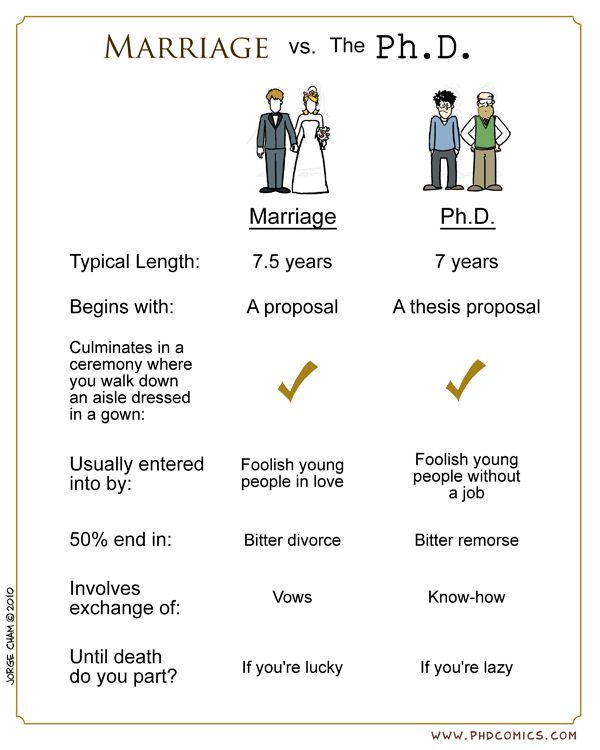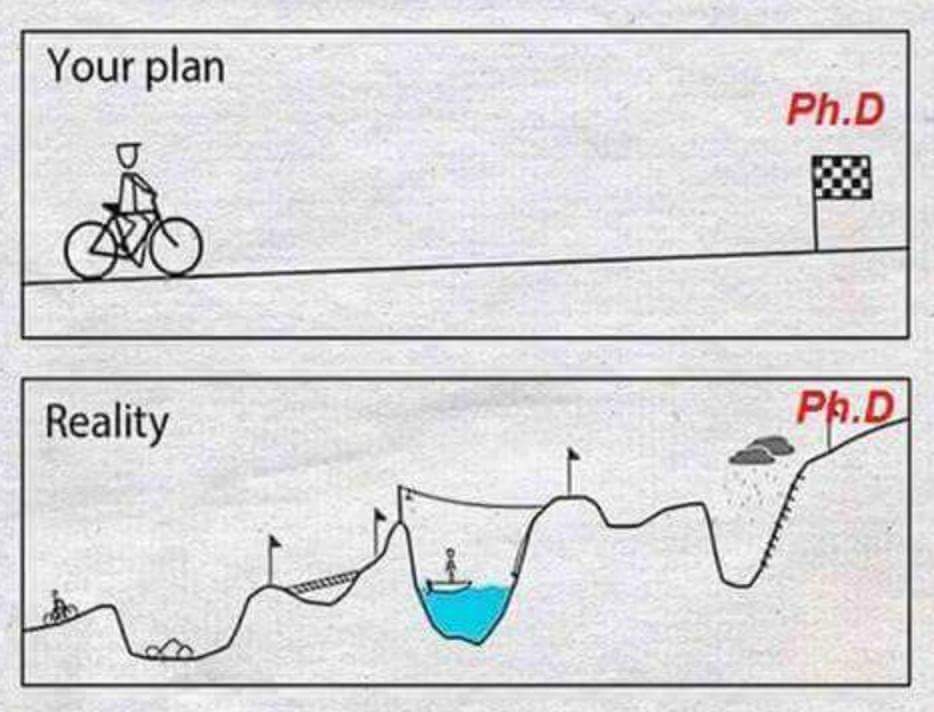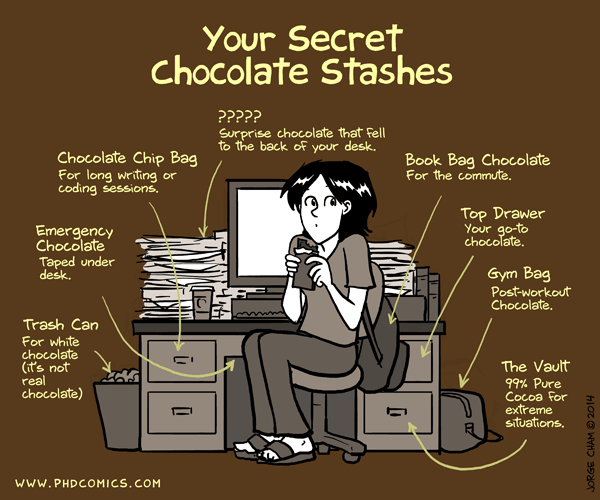My Ph.D. advisor, the great Professor Gajos, once observed, “Ph.D. is a snooze button of life.” Little did he know that his observation would fit my Ph.D. career to a T.
Here is a confession. The main reason I joined a Ph.D. program is that I couldn’t decide on what to do with my life. As the end of my college life drew near, I still couldn’t see myself fit in the industry yet. My family started to get concerned about my future. Then, it dawned on me, “why not delay the decision while working on whatever interests me in a socially (parentally) acceptable setting?” Ah, there is this thing called a Ph.D. Problem solved!
 Image source: PHD Comics
Image source: PHD Comics
In hindsight, it is absurd to jump into an akin-to-a-marriage relationship just to delay the inevitable. I have seen Ph.D. candidates who didn’t finish despite their clear purpose. I don’t recommend pursuing a Ph.D. for a flimsy reason as mine. But if you are reading this, you might have already jumped the ship anyway. Possibly, like me, you don’t know what you got yourself into. So here’re a few tips to navigate the snoozing time until you wake up.
Make sure that you can work well with your advisor
Much of Ph.D. students’ suffering stems from their (not) working relationship with their advisors. This doesn’t mean that their advisors are horrible people. I have seen an advising relationship where the student insisted on working on a topic out of their advisor’s expertise. The advisor stuck to giving the student freedom but couldn’t give them full support on that topic. It resulted in the student leaving the university. Both have gone to having other successful advising relationships after. It just wasn’t the right match.
Each advisor has their own advising and collaborating style. Some are hand-offs while some ask their students to report to them twice a day. Some give you total freedom in choosing your research topic while some assign you a problem to work on.
To ensure a smooth working relationship, you should make sure that their styles fit with your preferences. My advisor semi hand-offs style fits well with my preference to only work in what I am interested in. Before you commit, you could try working on a smaller project with a professor first. See how they guide your through the process. Do they give you the feedback that you can use? Are you OK with meeting with them once a week instead of once a month? Do they care about your success? Some schools also have rotation programs so you can try working with different professors in your first year. Of course, this isn’t always possible. You should always have a plan B (e.g., changing your advisor, finding another co-advisor).
Be open to serendipity
Graduate school is a great time to learn new things. You might find that your interest shifts from what you wrote in your statement of purpose. That is fine. It is common to change your research topics. I started grad school with the intention to work on Augmented Reality yet found myself building a crowd innovation platform instead. More drastically, a friend started his Ph.D. studying paper crumbling (yes, it is a thing) and ended up switching to machine learning in his third year.
Also, be open to meeting new people. Cool stuff happens when you collaborate outside of your lab. I would never have published a paper on idea generation and brain activities had I been hung out only with people in my subfield.
Prepare for a roller coaster ride
Prepare to navigate the ups and downs. You will hit walls again, and again, and again. And then some more. At least that happened to me.
 Image source: https://twitter.com/drhikov/status/1001050040918360064
Image source: https://twitter.com/drhikov/status/1001050040918360064
When I started on creativity research, I was so pumped to build cool stuff that helps people do creative work. However, cool stuff needs to be measured to claim its coolness. Choosing the right creativity measure can be elusive. There were few examples of creativity measures in Human-Computer Interaction (HCI). I spent my first 1.5 years figuring out how to measure creativity in the context of my research. I wrote a paper about my findings. It got rejected with high-contrast reviews. I didn’t have forever to study creativity measures. I wanted to build systems after all, so I moved on. Building creativity support tools was not easy either. I didn’t publish anything until my fourth year. The up felt great. Then, there was another wall to climb, followed by a brief moment of celebration, followed by an abyss of wrong assumptions, … and so on.
My experience is in no way representative. Some Ph.D. students struggle more. Some struggle less. We all struggle in our own way.
 Image source: PHD Comics
Image source: PHD Comics
You need an activity beyond your research to keep your sanity. Collecting chocolate helps. Exercising is a great friendlier-to-your-sugar-level alternative. You can use this as an opportunity to explore new sports or hobbies. I picked up Aikido during graduate school (best decision ever!). Nothing beats throwing others (on safe practice mats, in a harmonious peaceful way) after a paper rejection for Reviewer 2’s they-did-not-just-say-that comments. Aikido gave me a respite from my research and inner turmoils. On the mat, I find my center. For you, it could be ugly-sweater knitting. Anything is fine, as long as you like it and it energizes and clears your mind.
The upside of the emotional valleys is your developed resilience. After you are done, you will gain the confidence to work through anything. One can say a Ph.D. is a self-development program disguised as academic training.
No matter what your reason to embark on this journey, a Ph.D. could be a great time in your life. Most importantly, don’t forget to have fun. Yes, you can have fun despite the many horror Ph.D. stories out there. I enjoyed my Ph.D. time (free food, swags, and all). You could have a lot of freedom (depending on your advisor) to wholeheartedly pursue your intellectual curiosity. You got to hang out with great peers. Like many experiences, you can make it to be what you want.
Make the most of the snooze button so that, when you wake up, you will be ready for whatever the world will throw at you.